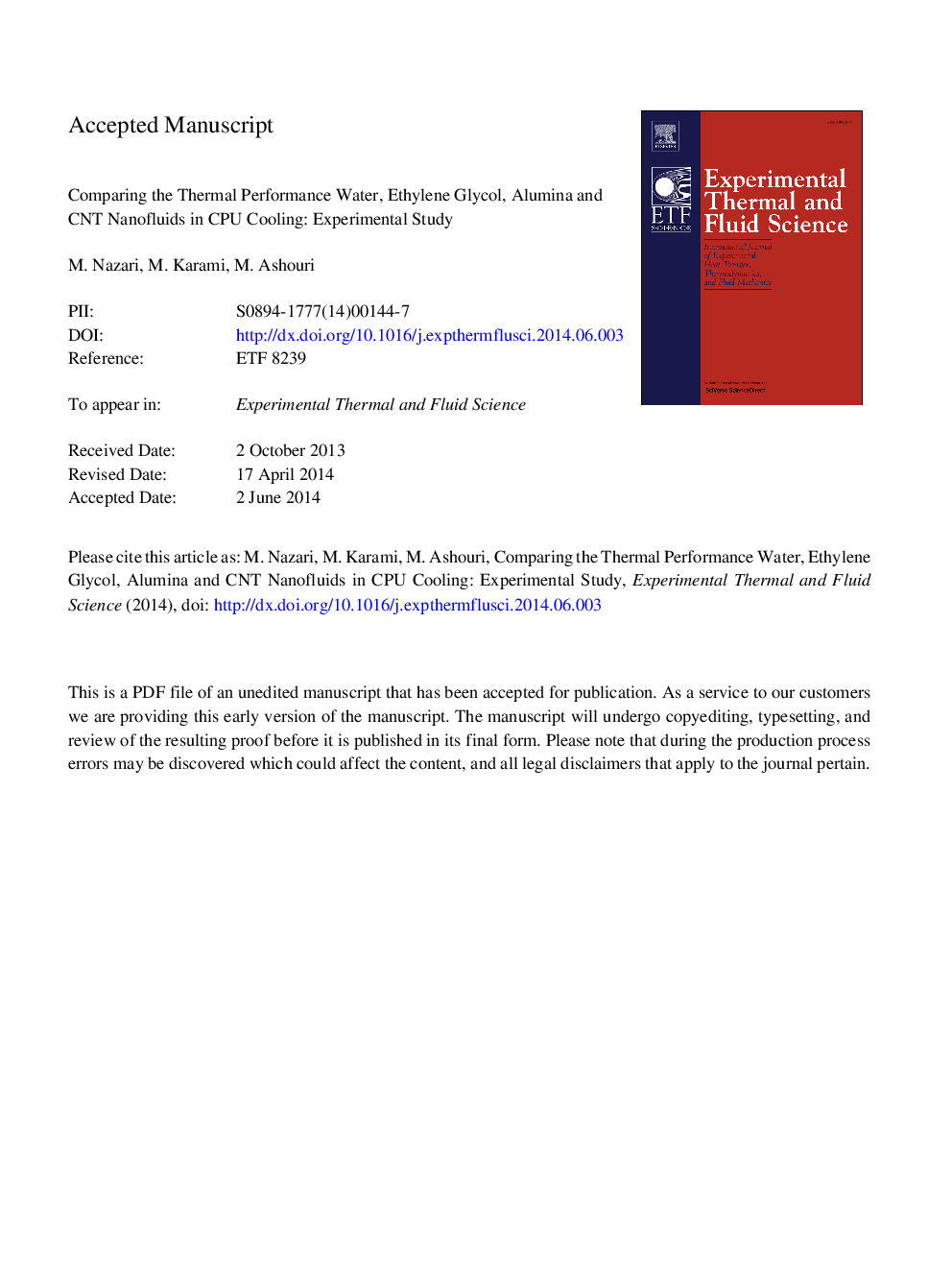| Article ID | Journal | Published Year | Pages | File Type |
|---|---|---|---|---|
| 651622 | Experimental Thermal and Fluid Science | 2014 | 29 Pages |
Abstract
The main purpose of this study is to investigate the CPU cooling using Alumina and CNT nanofluids and comparing the obtained results with the cooling performance of the common base fluids (water and Ethylene Glycol). The volume fraction of the Alumina/water nanofluid is considered as 0.1, 0.25 and 0.5(%w/w). Moreover, the volume fractions of CNT in the base fluid are 0.1 and 0.25 (%w/w). The Ethylene Glycol with the volume percent of 30% and 50% have been also employed for the cooling process. Experiments have been carried out for different flow rates. The averaged convection heat transfer coefficients as well as final processor temperatures have been reported for a wide range of parameters. The experimental results along with the confidence intervals are reported. Results show a 4% increase in the convection heat transfer coefficient in the case of Ethylene Glycol (30%). An increase of 6% is also reported by using 0.5% volume fraction of Alumina nanofluid. The best heat transfer enhancement (about 13%) is related to CNT nanofluids with the volume fraction of 0.25% for the flow rate of 21Â mL/s.
Related Topics
Physical Sciences and Engineering
Chemical Engineering
Fluid Flow and Transfer Processes
Authors
M. Nazari, M. Karami, M. Ashouri,
